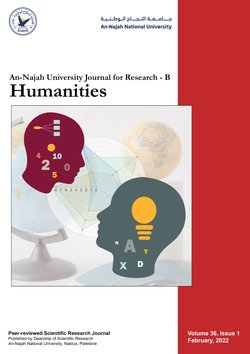Hiatus Resolution in Urhobo: A Constraint-Based Account
Article info
2022-12-07
2023-04-03
2024-02-01
403 - 418
Keywords
- Hiatus
- Urhobo
- Bleeding
- Repair Strategy
- Serialism
Abstract
The Urhobo language displays a hiatus environment created via morphological or syntactic concatenation. However, the grammar of the language requires that such an environment be repaired. This is because it violates a constraint forbidding hiatuses in the language. Languages that do not tolerate hiatus may apply one or more repair strategies to ensure deviant structures conform to constraint requirements. This study seeks to examine the hiatus resolution strategy in Urhobo and its interaction with general processes in the language. It employs data elicited from two adult L1 speakers of the language, while the analysis of the data is couched within the theory of constraint and repair strategies (TCRS). The study noted that only vowel elision is employed as a repair strategy, but it is bled by glide formation, which is a general process in the language. Elision targets V1, but it is blocked by *ØLINCON, a constraint that requires the preservation of elements that encode greater linguistic content in a string. Hence, it seems, at least superficially, that vowel elision affects any of the vowels on either side of the word boundary in Urhobo. The interaction between glide formation and vowel elision is couched in a serial implementation, such that the general process of glide formation applies first, thereby bleeding vowel elision. Thus, [+High] vowels do not necessarily survive vowel elision, as argued in previous studies, rather, glide formation as a general process bleeds an environment in which vowel elision, which is a repair strategy, can apply since it occurs first. There are two points of interest in this study; viz., it is argued that general processes can apply before repairs in the TCRS model and that such application accounts for bleeding relations between processes.
Eme, C. A., & EKIUGBO, P. O. (2024). Hiatus Resolution in Urhobo: A Constraint-Based Account. An-Najah University Journal for Research - B (Humanities), 38(2), 403–418. https://doi.org/10.35552/0247.38.2.2155
[1]C. A. Eme and P. O. EKIUGBO, “Hiatus Resolution in Urhobo: A Constraint-Based Account,” An-Najah University Journal for Research - B (Humanities), vol. 38, no. 2, pp. 403–418, Feb. 2024, doi: 10.35552/0247.38.2.2155.
Eme, Cecilia Amaoge, and Philip Oghenesuowho EKIUGBO. “Hiatus Resolution in Urhobo: A Constraint-Based Account.” An-Najah University Journal for Research - B (Humanities), vol. 38, no. 2, Feb. 2024, pp. 403–18. Crossref, https://doi.org/10.35552/0247.38.2.2155.
1.Eme CA, EKIUGBO PO. Hiatus Resolution in Urhobo: A Constraint-Based Account. An-Najah University Journal for Research - B (Humanities) [Internet]. 2024 Feb;38(2):403–18. Available from: http://dx.doi.org/10.35552/0247.38.2.2155
Eme, Cecilia Amaoge, and Philip Oghenesuowho EKIUGBO. “Hiatus Resolution in Urhobo: A Constraint-Based Account.” An-Najah University Journal for Research - B (Humanities) 38, no. 2 (February 2024): 403–18. https://doi.org/10.35552/0247.38.2.2155.
التباعد بين الاصوات المتتاليه في الاورهوبو: القيود واستراتيجيات الاصلاح
معلومات المقال
2022-12-07
2023-04-03
2024-02-01
403 - 418
الكلمات الإفتتاحية
- Hiatus
- Urhobo
- Bleeding
- Repair Strategy
- Serialism
الملخص
تقدم لغة الأورهوبو بيئة تسمح بوجود انقطاع بين أصوات العلة المتتالية في الكلام دون وجود صوت صحيح بينهما، وينتج ذلك عن العمليات الصرفية أو النحوية في اللغة. تتطلب قواعد اللغة إصلاح مثل هذه البيئة لسد تلك الفجوات الصوتية. عادةً، تطبق اللغات التي لا تتسامح مع هذه الفجوات إستراتيجيات إصلاح واحدة أو أكثر لضمان توافق الأنماط الصوتية المستحدثة مع القيود الصوتية المطبقة في تلك اللغات. تهدف هذه الدراسة إلى فحص استراتيجية إصلاح الفجوات الصوتية في الأورهوبو وتفاعلها مع العمليات العامة في اللغة. تستخدم الدراسة بيانات وأمثلة من متحدثين باللغة الأورهوبو كلغتهم الأم وهم في سن البلوغ، تم تحليل البيانات والأمثلة ضمن إطار نظرية القيود واستراتيجيات الإصلاح TCRS)) وقد بينت الدراسة وبما يتفق مع ما ورد في الدراسات السابقة ان حذف الحرف الصوتي يُستخدم كاستراتيجية لإصلاح الفجوة، والنتيجة هي تشكيل صوت مركب متحرك او منزلق diphthong))، وهو عملية عامة في اللغة. عند حذف الصوت (V1)، يتم اعاقة العملية بواسطة القيد (*Ø LIN)، وهو القيد الذي يتطلب الحفاظ على العناصر في تسلسلها الأصلي دون إدخال فجوات، حيث يؤثر الحذف على الحروف الصوتية الموجودة على حدود الكلمة في الأورهوبو بحيث ينتج عنه تشكيل الانزلاق diphthong)) حتى في حالة الأصوات المرتفعة [+High]، وتفيد هذه الدراسة أن العمليات العامة يمكن أن تطبق قبل إجراء الإصلاحات حسب نظرية القيود واستراتيجيات الإصلاح و ان مثل هذا التطبيق يبرر التشابك بين العمليات الصرفية والقواعدية.
Eme, C. A., & EKIUGBO, P. O. (2024). Hiatus Resolution in Urhobo: A Constraint-Based Account. An-Najah University Journal for Research - B (Humanities), 38(2), 403–418. https://doi.org/10.35552/0247.38.2.2155
[1]C. A. Eme and P. O. EKIUGBO, “Hiatus Resolution in Urhobo: A Constraint-Based Account,” An-Najah University Journal for Research - B (Humanities), vol. 38, no. 2, pp. 403–418, Feb. 2024, doi: 10.35552/0247.38.2.2155.
Eme, Cecilia Amaoge, and Philip Oghenesuowho EKIUGBO. “Hiatus Resolution in Urhobo: A Constraint-Based Account.” An-Najah University Journal for Research - B (Humanities), vol. 38, no. 2, Feb. 2024, pp. 403–18. Crossref, https://doi.org/10.35552/0247.38.2.2155.
1.Eme CA, EKIUGBO PO. Hiatus Resolution in Urhobo: A Constraint-Based Account. An-Najah University Journal for Research - B (Humanities) [Internet]. 2024 Feb;38(2):403–18. Available from: http://dx.doi.org/10.35552/0247.38.2.2155
Eme, Cecilia Amaoge, and Philip Oghenesuowho EKIUGBO. “Hiatus Resolution in Urhobo: A Constraint-Based Account.” An-Najah University Journal for Research - B (Humanities) 38, no. 2 (February 2024): 403–18. https://doi.org/10.35552/0247.38.2.2155.
An-Najah National University
Nablus, Palestine
Nablus, Palestine
- P.O. Box
- 7, 707
- Fax
- (970)(9)2345982
- Tel.
- (970)(9)2345560
- (970)(9)2345113/5/6/7-Ext. 2628
- [email protected]
- EIC
- Prof. Ismail Warad
